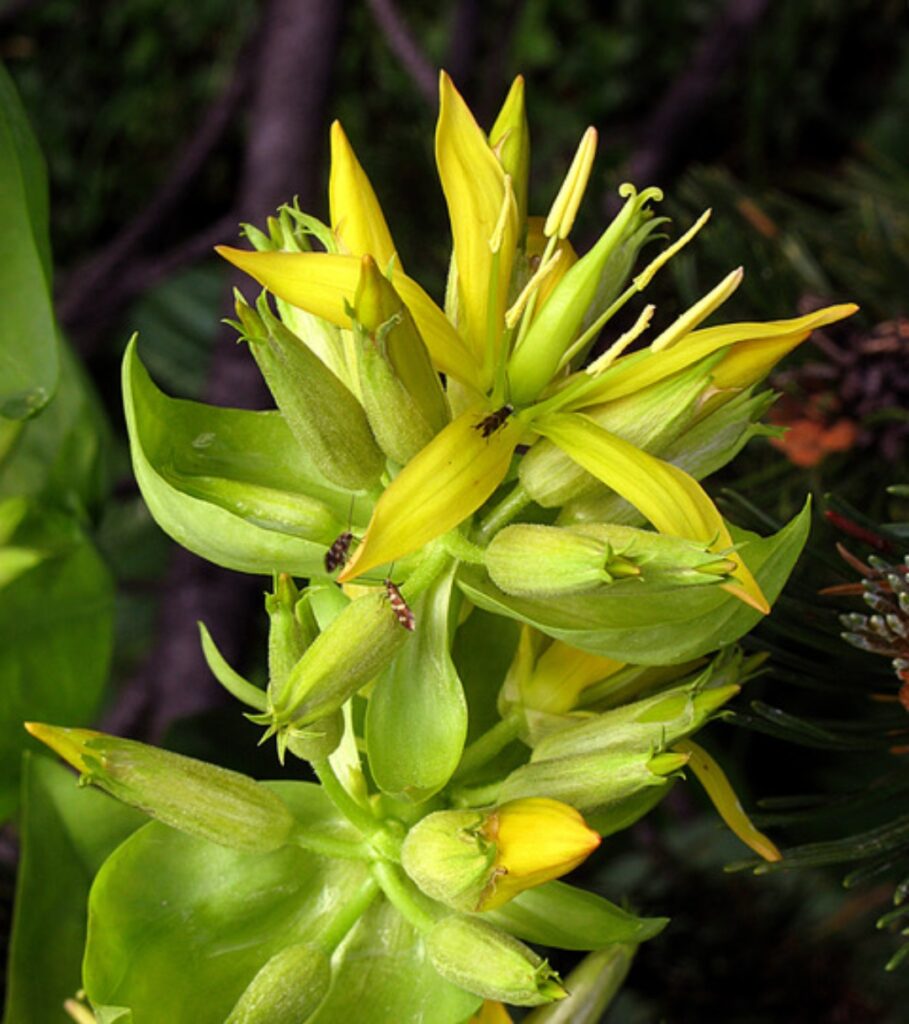
Switzerland
Gentian Flower
Gentianaceae

General Description / Cultural Significance
One of the natural wonders of Switzerland is the abundance of wildflowers. Growing at elevations between 3,000 to 4,000 feet, the native herbaceous perennial gentian is one of Switzerland’s most remarkable wild plants and iconic Alps wildflower.
Switzerland has an ancient tradition of using wild plants as medicine and food. Although knowledge of wild plants is waning in the general population, the tradition is still passed on in smaller villages. The gentian flower is an alpine wild food plant so well-known and widely used that it has become the symbol of the Alps. The root of the gentian is made into a bitter vegetable tonic that relieves many dyspeptic conditions, and the fresh gentian root is fermented and distilled into liqueurs and apéritifs, which convey the volatile oil’s characteristic herbal smell and taste. This plant is thought to have been used as medicine since the beginning of human life. The plant genus is now world famous for its pharmacological activities and range of chemical constituents.
Climate Change / Conservation Status
During a visit with scientists at the Jungfraujoch Sphinx Observatory in 2013, they reported substantial changes in snow patterns. Snow amounts and duration continue to reduce and there are many more weeks of rain when it should have been snow. Switzerland has become hotter and drier due to climate change, impacting the glaciers, water-feeding forests, biodiversity, and human health.
The extended forest drought that the country has been experiencing has triggered a rapid decline of the country’s iconic spruce forests, leaving them vulnerable to bark beetle and scientists have begun to forecast their complete loss. This brings about many interconnected effects, from altering the carbon balance to collapsing the ecosystem due to the loss of the services they provide. This reduces Switzerland’s biodiversity including the medical plants and the role they play in traditional life.
The 2023 summer heat dome brought some of the highest temperatures measured. Permafrost at the top of the Alps began melting causing massive landslides and visibly retreating glaciers.
There are around 400 species of Gentians and all grow in alpine regions. They are very difficult to grow outside their wild habitat. Only a few species have been cultivated.
Alternate Names
Stemless Gentian
Yellow Gentian
Bitterroot
Bitterwort
Wild Gentian
Gall Weed
Gentiana
Sources
The Cultural Section, Embassy of Switzerland. This statement can be found on the original World Sensorium Website.
Grieve, M. (2016). Gentians. Botanical.com. http://www.botanical.com/botanical/mgmh/g/gentia08.html
University of Bern. “Impacts of climate change in Switzerland: Adaptation and climate change mitigation must go hand in hand.” (2014).ScienceDaily. 14 March 2014. <www.sciencedaily.com/releases/2014/03/140314093656.htm>.

